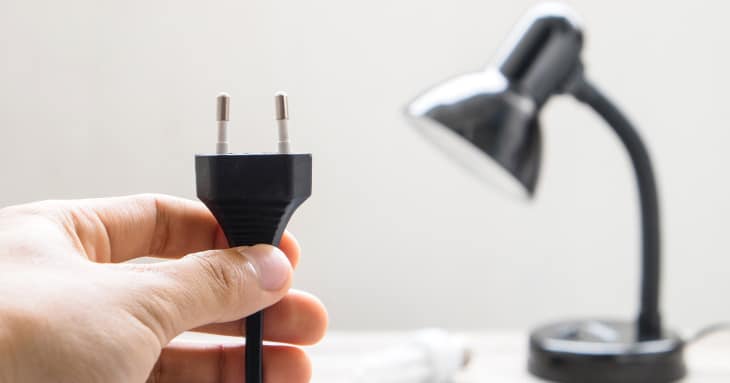If only there was one magic formula on how households can cut back on their electrical consumption, everyone will be doing it. Depending on the size of your household and the number of electrical appliances and electronic gadgets that you have, paying your utility bills – both water and electricity – will take up a huge chunk off your budget.
So if there’s not one single way for you to save on electrical consumption, how can you slash your utility bills? The solution is to use a combination of everyday practices. Once combined the individual savings will add up to a lot, resulting to reduced electricity and water bills.
Let’s take your home lighting system as an example. By simply replacing incandescent bulbs with CFLs or compact fluorescent bulbs, you can reduce your electricity usage for lighting by up to 75%. Using power strips to get rid of phantom electricity, or power consumed when electrical appliances are put on standby mode instead of turned off, will take up to 15% off your utility bills.
Lowering your thermostat by one degree can reduce your heating bills by 3%.To give you an idea about how a typical household uses up electricity, here’s a quick look at the figures:
- 29% – Heating
- 17% – Cooling
- 14% – Water Heating
- 13% – Appliances
- 12% – Lighting
- 11% – Other Electrical Items
- 4% – Electronics
This is based from the chart provided by EnergyStar.gov. The figures should give you a clearer picture of how different aspects of running your household daily consume electricity. If you want to slash a big percentage off your utility bills, you can take steps to efficiently heat and cool the house, save electricity for heating water, and manage your electrical appliances more efficiently.
Again, the key to saving electricity at home is to combine as many electricity-saving practices as possible. Doing these on a daily basis and having all family members get in on the action is the best way to succeed.
Take a look at the top 50 ways for you to save electricity at home.
In this guide...
Cooling and Heating
- Cooling and heating makes up 50% of your utility bills, so make sure that you have an efficient system to manage the temperature inside your home.
- To keep your air conditioning unit in tip top shape, change or clean the air filters at least ones a month.
- See to it that your walls are properly insulated to prevent cooled air from escaping during summer, and the draft from coming in during the winter.
- To prevent cooled air from escaping, open interior doors and use shades, blinds and drapes to block the sun.
- Use a ceiling fan properly. During summer, having it run in a counter-clockwise direction will allow cool air to circulate properly. Come wintertime, have it run at low speed in a clockwise direction.
- Do an overall checking of your house to make sure that the temperature inside can be kept comfortable without using too much electricity. Repair leaky ducts, check for household leaks and close any unused air vents.
- Install a programmable thermostat. Adjusting it by even one degree during the winter will save you a lot of money on utility bills.
- Cover all bare floors during winter to add comfort and promote heat retention.
- During the winter, change the filters in your heating system to maintain its optimum functionality.
- Don’t stack anything against your HVAC so that the air compressor can work efficiently.
Lighting
- If you haven’t already done so, replace traditional bulbs with CFLs or energy-saving bulbs.
- Use the right size, light color and brightness when installing lights on a room to prevent wasted energy.
- Halogen light bulbs are not a good idea to use inside the house because they can get hot enough to be a fire hazard.
- Look for five areas in the house where the lights are always turned on at night – and replace the bulbs with Energy Star-rated lamps to save on electricity.
- For outdoor lighting, consider investing in solar lamps. Otherwise, use outdoor CFL.
- Use task lighting over desks, sewing tables, computer tables, etc. to carry on the task without having to light up an entire room.
- Use dimmer switches so you won’t have to use more energy than necessary to light up lamps and bulbs.
- To make your lighting system efficient, consider painting walls, ceilings and floors with lighter colors. Dark colors absorb light, therefore requiring high-wattage lamps for illumination.
- If possible, place hanging lamps in the corner of a room instead of against a flat wall. This way, more usable light can be produced because of the two wall surfaces.
- Clean lighting fixtures regularly to retain the brightness of the lamps.
Water Heating
- Replace regular showerheads with low-flow models to save on water and electricity.
- Choose a water heater which is suitable for your home maintenance needs. A tankless model is pricier to install but as compared to on-demand water heaters, they consume less electricity.
- When doing the laundry, skip the hot water cycle – the cleaning works just as well.
- Regularly check your hot water pipes for leaks to prevent energy wastage.
- When leaving home for several days, turn off the water heater. When you get back, it should only take an hour or so to set the temperature.
- For hot and cold water pipes, insulating the first six feet of the tubes will keep energy bills low.
- Consider investing in a solar water heater, especially if you have a heated pool or Jacuzzi.
- Only run the dishwasher on full loads to save on electricity and water.
- If your water heater needs replacement, look for ones with a high Energy Star rating. Its initial cost may be higher but the energy savings will be worth it in the long run.
- Install a timer that’s compatible with the model of your water heater. Program to turn it off when you are not at home.
Electrical Appliances
- Use a power strip to get rid of phantom electricity which is consumed when appliances are put on standby mode instead of completely turned off.
- When replacing electrical appliances, look for ones with a high Energy Star rating.
- Laptops consume less electricity than desktop computers. If you do have a desktop computer, replace traditional monitors with LEDs or LCDs to save on electricity.
- When charging gadgets, unplug the charger from the outlet to avoid drawing power continuously.
- Computers should be put on sleep or hibernate mode instead of using a screensaver to save on electricity when the devices are not in use.
- Unless you’re using the cable box for DVR purposes, unplug it when the TV is not in use.
- Keep your freezer full, it uses up less energy.
- Instead of using a conventional oven to heat small amounts of food, use the microwave oven or a toaster oven.
- Keep the dryer running efficiently by cleaning the lint filter.
- Use the economy or energy-saving mode when turning on the dishwasher.
Additional Ways to Save Electricity at Home
- Turn off the humidifier or dehumidifier when not needed.
- Avoid opening the refrigerator door of freezer too often because cold air escapes each time you do so.
- Operate heat-generating appliances in the afternoon or at night when it’s cooler.
- If your furnace needs replacement, look for one which is at least 90% efficient.
- Consider investing in solar panels or even assemble ones found on electronic kits so that you can harness the power of the sun to power up your home.
- When replacing electrical appliances, do not buy models which are larger than what you actually need. A large-capacity washing machine, dryer or dishwasher that only handles a small load will only end up wasting electricity.
- When cooking frozen food items, thaw them early so you won’t have to use the microwave oven.
- If the heat outside is unbearable during the summer, stay in the cooler parts of your home, such as the basement and turn off the air conditioning unit at the other rooms which are not in use.
- To save electricity while cooking, try using a slow-cooker and look for pans with tight-fitting lids.
- Invest in gadgets like an electricity usage monitor. This will indicate the number of kilowatt hours you are using in a specific timeframe and how much phantom load your electrical appliances are consuming.
Get the entire family in on the act of combining all these energy-saving practices. When you put together all your efforts, you will save on electricity at home and greatly lower your utility bills.










